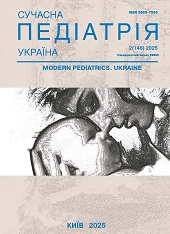Surgical treatment and forensic medical assessment: a clinical case of iatrogenic tracheal injury in a child
DOI:
https://doi.org/10.15574/SP.2025.2(146).157161Keywords:
tracheal injury, pediatrics, improper medical care, intubation, forensic medical examination, pneumothoraxAbstract
Medical errors, particularly in pediatrics, are a significant issue that can lead to serious consequences for children's health. The increased vulnerability of children to complications during medical procedures requires highly qualified healthcare professionals and adherence to treatment protocols. Forensic medical analysis is an essential tool for evaluating substandard care and determining the causes of injuries, especially in cases of tracheal injury during medical procedures.
The aim of the study is to present a clinical case of iatrogenic tracheal injury in a child as a result of dental care with subsequent forensic medical analysis.
Clinical case. This case describes a tracheal injury in a 3-year-old child during dental treatment under general anesthesia. After intubation, the child developed subcutaneous emphysema, pneumothorax, and pneumomediastinum, suggesting a possible tracheal rupture. Clinical diagnostics, including computed tomography, confirmed a defect in the tracheal wall. Emergency surgery was performed to repair the tracheal defect, ensuring complete recovery of tracheal function and the patient’s recovery.
Conclusions. Tracheal injuries in children are rare but serious complications that require immediate diagnosis and treatment. An important cause of such injuries is improper intubation technique. A thorough evaluation of clinical symptoms, along with radiological and endoscopic examinations, enables the timely detection of injuries, allowing for the necessary surgical intervention. Forensic medical analysis confirms that such injuries constitute grievous bodily injuries caused by deficiencies in medical care delivery.
The study was conducted in accordance with the principles of the Declaration of Helsinki. Informed consent was obtained from the parents of the children prior to participation.
The authors declare no conflict of interest.
References
Berzina AB, Pletenetska AO, Pavliuk PP, Berdnik IV, Kozenets OH. (2024). The specifics of the interpretation of non-performance or improper performance by a medical or pharmaceutical employees of their professional duties, taking into account the practice of the ECHR. Wiadomości Lekarskie. 77(5): 887-893. https://doi.org/10.36740/WLek202405102; PMid:39008573
Gohal G. (2021). Models of teaching medical errors. Pakistan Journal of Medical Sciences. 37(7): 2020-2025. https://doi.org/10.12669/pjms.37.7.4506; PMid:34912437 PMCid:PMC8613064
Jalil YC, Villarroel GS, Barañao PG, Briceño LL, Lara PA, Méndez MR. (2020). Pediatric tracheostomy tube change. Revista Chilena de Pediatría. 91(5): 691-696. https://doi.org/10.32641/rchped.v91i5.1351; PMid:33399633
Marsh KM, Fleming MA, Turrentine FE, Levin DE, Gander JW et al. (2021). Pediatric surgical errors: A systematic scoping review. Journal of Pediatric Surgery. 57(4): 616-621. https://doi.org/10.1016/j.jpedsurg.2021.07.019; PMid:34366133 PMCid:PMC8792106
Ministry of Health of Ukraine. (1995, Jan 17). Pravyla sudovo-medychnoho vyznachennia stupenia tiazhkosti tilesnykh ushkodzhen. Nakaz MOZ Ukrainy vid 17.01.1995 No.6. URL: https://zakon.rada.gov.ua/laws/show/z0255-95#Text.
Proctor ML, Pastore J, Gerstle JT, Langer JC. (2003). Incidence of medical error and adverse outcomes on a pediatric general surgery service. Journal of Pediatric Surgery. 38(9): 1361-1365. https://doi.org/10.1016/S0022-3468(03)00396-8; PMid:14523820
Sadovyi V, Kuchyn Y, Bielka K, Sazhyn D. (2023). Diagnostic and therapeutic model of post-intubation tracheal injuries. Ukrainian Scientific Medical Youth Journal. 3(141): 61-69. https://doi.org/10.32345/USMYJ.3(141).2023.61-69
Sergi CM. (2024). Medical errors can cost lives. Archives of Medical Science. 20(4): 1378-1383. https://doi.org/10.5114/aoms/192727; PMid:39439691 PMCid:PMC11493032
Sohn L, Peyton J, von Ungern-Sternberg BS, Jagannathan N. (2021). Error traps in pediatric difficult airway management. Paediatric Anaesthesia. 31(12): 1271-1275. https://doi.org/10.1111/pan.14289; PMid:34478189
Downloads
Published
Issue
Section
License
Copyright (c) 2025 Modern pediatrics. Ukraine

This work is licensed under a Creative Commons Attribution-NonCommercial 4.0 International License.
The policy of the Journal “MODERN PEDIATRICS. UKRAINE” is compatible with the vast majority of funders' of open access and self-archiving policies. The journal provides immediate open access route being convinced that everyone – not only scientists - can benefit from research results, and publishes articles exclusively under open access distribution, with a Creative Commons Attribution-Noncommercial 4.0 international license (СС BY-NC).
Authors transfer the copyright to the Journal “MODERN PEDIATRICS. UKRAINE” when the manuscript is accepted for publication. Authors declare that this manuscript has not been published nor is under simultaneous consideration for publication elsewhere. After publication, the articles become freely available on-line to the public.
Readers have the right to use, distribute, and reproduce articles in any medium, provided the articles and the journal are properly cited.
The use of published materials for commercial purposes is strongly prohibited.

